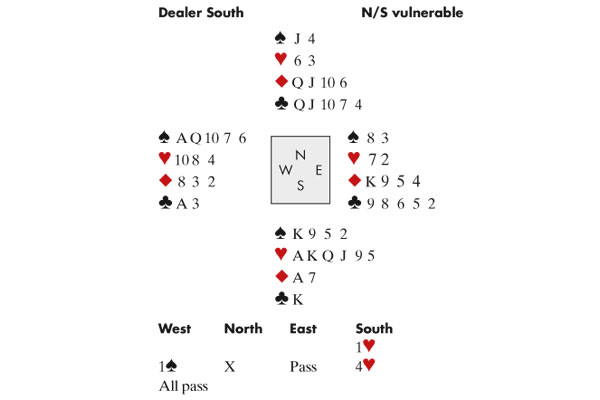I feel that we in the bridge community (is there one? Am I in it?) haven’t made enough of a song-and-dance about Andrew Robson being awarded an OBE in the Queen’s new year’s honours list. It’s been nearly 20 years since a bridge player was honoured in this way (the last was Nicola Smith in 1995), and it’s richly deserved: Andrew has done more than anyone in this country to promote the game.
In fact, his club in Parson’s Green is the only place I feel completely confident in sending people who want to learn. Bridge players can be a pretty rude and intimidating lot, but Andrew has instilled a zero tolerance policy: no bad behaviour at all. He himself sets a fantastic example, strolling around, patiently answering questions and being friendly to one and all.
But don’t be fooled by that benevolent smile — at the table, he’s as merciless as the next pro. Here he is in action:
2♣ showed a weak hand with both majors. The defence led two rounds of spades, Andrew ruffing the second. East was likely to hold ♣Kxx. Trumps could be picked up by finessing twice from dummy — but Andrew needed to use one trump to ruff his third heart. At Trick 3 he ran the ♦10 to East’s ♦J, and East shifted to a heart. Andrew rose with the ♥A, played a diamond to the ace, then led the ♣J. East played low (he had to — if he covered, Andrew could ruff a heart). Now Andrew switched tack: he ruffed a diamond to set up the suit, crossed to the ♥K and led the ♦Q. If East ruffed, he could over-ruff, ruff a heart and claim. If East discarded, he could discard a heart, then lead the second trump and finesse against East’s ♣K. Eleven tricks in the bag.





Comments